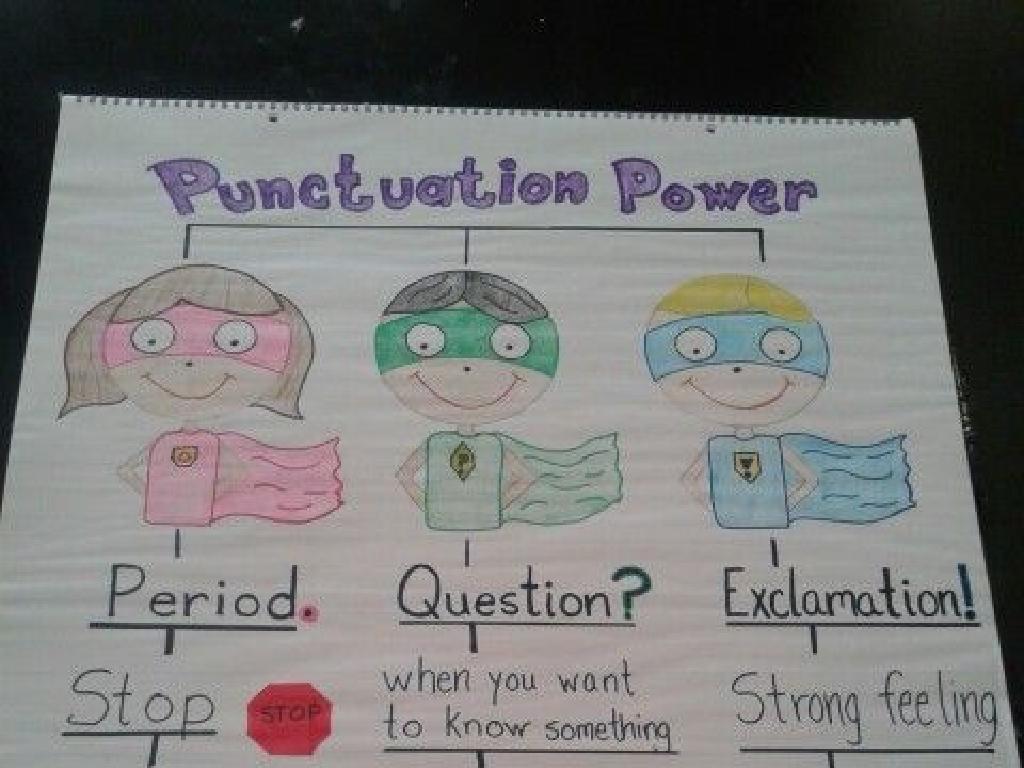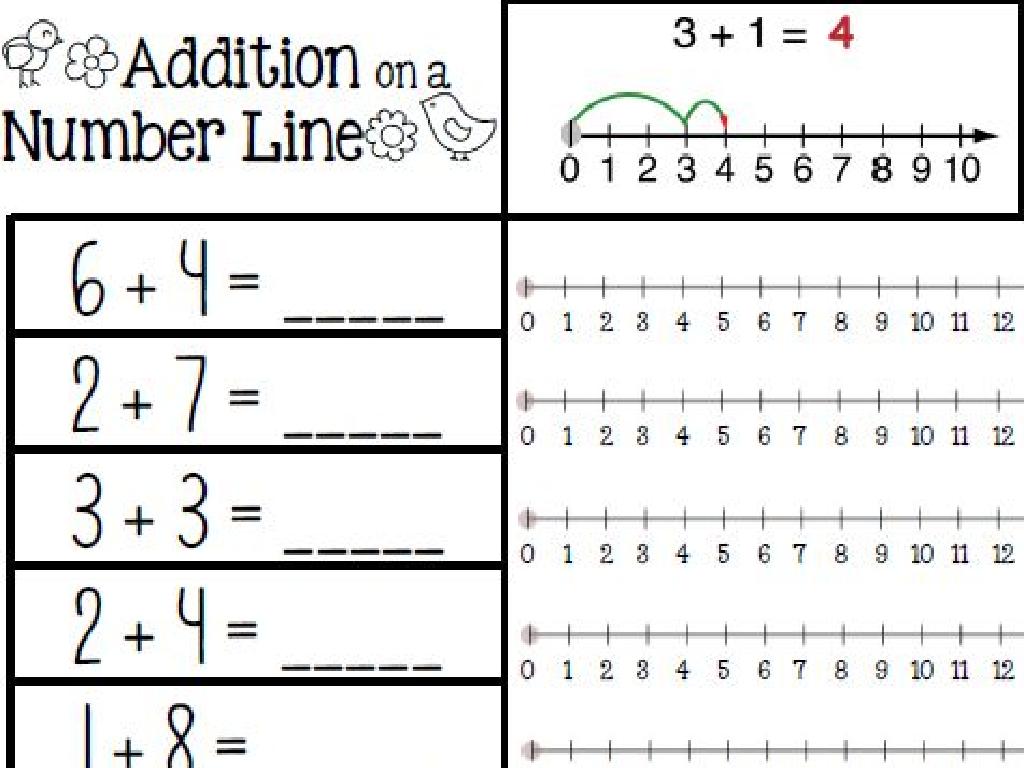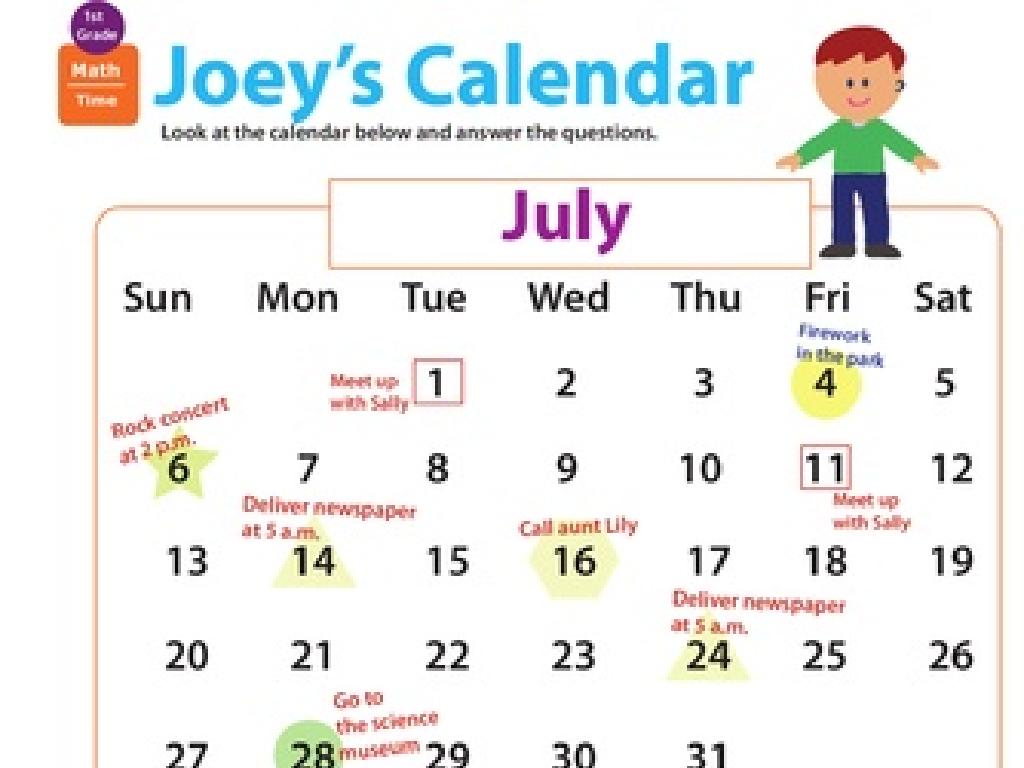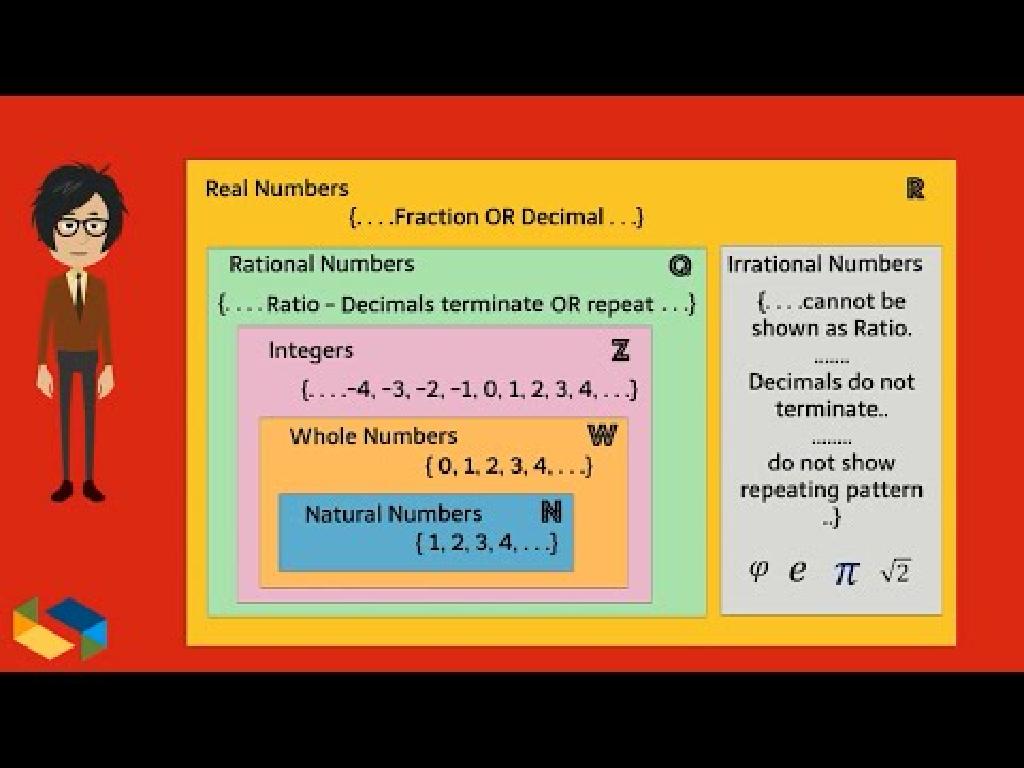Read Poetry
Subject: Language arts
Grade: Third grade
Topic: Literary Texts: Level 2
Please LOG IN to download the presentation. Access is available to registered users only.
View More Content
Welcome to Poetry!
– What is poetry?
– Poetry is a form of writing that expresses ideas and feelings in a special way.
– Reasons we enjoy poems
– Poems can be fun, they rhyme, share stories, and express emotions.
– Exploring poetry types
– There are many kinds, like acrostic, haiku, and free verse.
– Engaging with poems
|
This slide introduces students to the wonderful world of poetry. Begin by explaining that poetry is a unique form of literature that uses rhythm, rhyme, and emotion to convey messages in a condensed form. Discuss how poems can be enjoyable because they often have a musical quality, tell interesting stories, and allow us to feel and express a range of emotions. Introduce different types of poetry, such as acrostic poems where the first letter of each line spells a word, haiku with its 5-7-5 syllable pattern, and free verse that doesn’t follow any specific rules. Encourage students to think about their favorite songs as examples of poetry and to be open to exploring and creating their own poems.
Rhyme and Rhythm in Poetry
– Understanding rhymes in poems
– Rhymes are words that end with the same sound, like ‘cat’ and ‘hat’.
– Feeling the rhythm in verses
– Rhythm is like the poem’s heartbeat, a pattern of beats or a flow.
– Finding rhymes in a poem
– Clapping to the poem’s rhythm
– Clap along to each line to feel the beat and rhythm.
|
This slide introduces the concepts of rhyme and rhythm, which are fundamental to the structure of poetry. Rhymes are pairs or groups of words that have the same ending sound, which often creates a pleasing effect in poetry. Rhythm refers to the pattern of sounds in a poem, which can be felt through the stressed and unstressed syllables in each line. Encourage students to listen for rhyming words and to feel the rhythm as they read poems aloud. An activity could involve students clapping along to the rhythm of a poem to better understand the concept. Have them identify rhyming words and discuss how the rhythm makes them feel. This will help them appreciate the musical quality of poetry.
Imagery in Poetry: Painting with Words
– Imagery creates mental pictures
– Words describe visuals, sounds, smells, tastes, and textures
– Engage senses to experience a poem
– Imagine the smell of rain or the sound of leaves crunching
– Example: Imagery in ‘The Fog’
– ‘The fog comes on little cat feet. It sits looking over harbor and city…’
– Imagery makes poetry come alive
|
Imagery is a key element in poetry that allows readers to create vivid mental pictures and emotional responses. It involves using descriptive language that appeals to the five senses. When reading a poem, encourage students to visualize the scenes and feel the emotions the poet is trying to convey. Use Carl Sandburg’s poem ‘The Fog’ as an example to illustrate how simple imagery can paint a powerful picture in the reader’s mind. Discuss how the metaphor of the fog being like ‘little cat feet’ helps us see and feel the fog’s soft, silent approach. Encourage students to think of their own examples of imagery from their experiences or other poems they have read.
Feelings and Emotions in Poetry
– Poems stir our emotions
– Like a song, a poem can make us joyful or tearful.
– Share a poem that moves you
– Choose a poem that makes you feel happy or sad and tell us why.
– Discuss emotions in poetry
– Talk about how words and rhythm in poems make us feel.
– Reflect on how poems affect us
|
This slide aims to help students understand the emotional power of poetry. Begin by explaining that poems, like music, can evoke a wide range of feelings. Encourage students to think of times when words have made them feel happy, sad, or excited. For homework, ask them to find a poem that resonates with them emotionally and be prepared to share it in class. During the discussion, guide them to articulate the feelings the poem evokes and explore what elements of the poem contribute to these feelings, such as word choice, rhythm, or imagery. This exercise will enhance their emotional literacy and appreciation for poetry.
Reading Poetry Aloud
– Learn to read poems aloud
– Practice expressive reading
– Use tone and rhythm to make the poem come alive
– Volunteer for poem reading
– Classmates will take turns reading a poem to the class
– Listen and learn from others
– Pay attention to how your friends read their poems
|
This slide is designed to engage students in the art of reading poetry aloud. Begin by explaining the importance of reading with expression, as it brings the poem to life and helps convey the emotions and rhythm intended by the poet. Encourage students to practice reading aloud at home, using changes in tone and pace to express the poem’s meaning. During the class, select volunteers to read a chosen poem to their peers. This activity not only helps with public speaking skills but also allows students to learn from each other. Offer positive feedback and constructive tips after each reading to foster a supportive learning environment.
Writing Our Own Poems
– Start with simple structures
– Like acrostics or shape poems
– Write a four-line poem
– We’ll create a poem as a group
– Use rhyme and rhythm
– Rhymes are words that sound alike, rhythm is the beat
– Share our poems with the class
|
This slide introduces the activity of writing poems, aimed at fostering creativity and understanding of poetry in third graders. Begin by explaining simple poem structures such as acrostics or shape poems, which provide a clear framework for the students to follow. Then, as a class, write a four-line poem on a common theme to demonstrate the process. Emphasize the use of rhyme the repetition of similar sounding words, and rhythm the pattern of beats or stresses in spoken or written language. After the group activity, encourage students to write their own short poems and share them with the class to build confidence and celebrate their creativity. Provide guidance and support as they explore the use of rhymes and rhythms in their writing.
Sharing Our Poems
– Students present their poems
– Discuss the highlights of each poem
– What parts of the poems did we enjoy?
– Compliment each other’s work
– Kind words make us all happy poets!
– Celebrate our poetic creativity
– Poetry is a fun way to express ourselves!
|
This slide is for a class activity where students will share the poems they have written. It’s a chance for them to express themselves and for the class to learn to appreciate different forms of expression. Encourage students to listen attentively and think about what they enjoyed in each poem. They should be prompted to give specific compliments to their peers, fostering a supportive classroom environment. As a teacher, provide guidance on how to give constructive feedback. Possible activities include a poetry reading circle, creating a class poetry book, or even a mini ‘poetry slam’ where students perform their poems.
Class Activity: Poetry Gallery Walk
– Poems displayed around the room
– Walk, read, and discuss with peers
– Choose your favorite poem line
– Think about which words touch your heart or make you think
– Write down and reflect on it
– Why did this line stand out to you?
|
This activity is designed to engage students with poetry in a dynamic and interactive way. By displaying different poems around the classroom, students can physically move around the space, which helps to keep them engaged and active. Encourage them to read the poems aloud with their classmates and discuss their thoughts and feelings about the poems. This will help develop their critical thinking and interpretive skills. Ask them to write down their favorite line from any poem and reflect on why it resonates with them. This personal connection to the poetry can foster a deeper appreciation for the art form. For the teacher: prepare a diverse selection of poems that are age-appropriate and consider having prompts or questions near each poem to guide discussion. After the activity, you can have a sharing session where students explain their choices and reflections.


/mla_citation_example.jpg)



